 Search by Keyword
|
"SHE CAME IN THROUGH THE BATHROOM WINDOW"
(John Lennon – Paul McCartney)
When most people become the victim of a crime, such as burglary, the police are called and the perpetrators are pursued with the intent of prosecution. However, if you are a victim of such a crime but you happen to be a songwriter and member of the most popular recording act in the world, you apparently write a song about it instead.
Songwriting History
Interviewed in September of 1969 by Australian DJ Tony McArthur, John Lennon indicated that "She Came In Through The Bathroom Window" began being written mid-May of 1968. He stated, "It was when Paul and I went to America to publicize Apple about two years ago, and we were just in the flat we were staying in and he just came out with that line, 'she came in through the bathroom window.' So, he had it for years, and he eventually finished it."
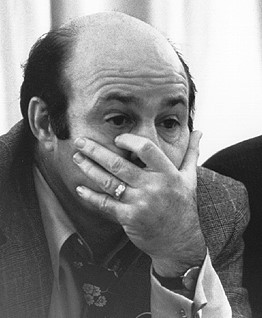 John and Paul's visit to New York City was to officially unveil the group's Apple Corps venture via a series of interviews with the press, including a press conference at the Americana Hotel, a business meeting aboard a Chinese “Junk” while it was sailing around the Statue of Liberty, and an appearance on the NBC-TV show “The Tonight Show,” guest-hosted by baseball star Joe Garagiola in the absence of Johnny Carson. Their visit stretched from May 11th to 15th, 1968, so the song began being written during these five days. John and Paul's visit to New York City was to officially unveil the group's Apple Corps venture via a series of interviews with the press, including a press conference at the Americana Hotel, a business meeting aboard a Chinese “Junk” while it was sailing around the Statue of Liberty, and an appearance on the NBC-TV show “The Tonight Show,” guest-hosted by baseball star Joe Garagiola in the absence of Johnny Carson. Their visit stretched from May 11th to 15th, 1968, so the song began being written during these five days.
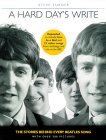 Prior to these five days of activity, an interesting event at Paul's St. John's Wood home had occurred involving a small group of “Apple Scruffs,” a term coined by The Beatles referring to female fans who constantly hung around waiting for the group outside their studios, Apple headquarters and sometimes their homes. Diane Ashley, one of these devotees, explains the events of a certain day at Paul's house. “We were bored, he was out, and so we decided to pay him a visit,” she related to Steve Turner for his book “A Hard Day's Write.” “We found a ladder in his garden and stuck it up at the bathroom window which he'd left slightly open. I was the one who climbed up and got in.” She then went to the front door to allow a few other fellow “Scruffs” access to their hero's home. “I don't regret any of it,” she adds. “I had a great time, a really great time!” Prior to these five days of activity, an interesting event at Paul's St. John's Wood home had occurred involving a small group of “Apple Scruffs,” a term coined by The Beatles referring to female fans who constantly hung around waiting for the group outside their studios, Apple headquarters and sometimes their homes. Diane Ashley, one of these devotees, explains the events of a certain day at Paul's house. “We were bored, he was out, and so we decided to pay him a visit,” she related to Steve Turner for his book “A Hard Day's Write.” “We found a ladder in his garden and stuck it up at the bathroom window which he'd left slightly open. I was the one who climbed up and got in.” She then went to the front door to allow a few other fellow “Scruffs” access to their hero's home. “I don't regret any of it,” she adds. “I had a great time, a really great time!”
 Another “Apple Scruff” named Margo Bird continues the story: “They rummaged around and took some clothes. People didn't usually take anything of real value but I think this time a lot of photographs and negatives were taken. There were really two groups of 'Apple Scruffs' – those who would break in and those who would just wait outside with cameras and autograph books. I used to take Paul's dog for a walk and got to know him quite well. I was eventually offered a job at Apple. I started by making the tea and ended up in the promotions department working with Tony King.” Another “Apple Scruff” named Margo Bird continues the story: “They rummaged around and took some clothes. People didn't usually take anything of real value but I think this time a lot of photographs and negatives were taken. There were really two groups of 'Apple Scruffs' – those who would break in and those who would just wait outside with cameras and autograph books. I used to take Paul's dog for a walk and got to know him quite well. I was eventually offered a job at Apple. I started by making the tea and ended up in the promotions department working with Tony King.”
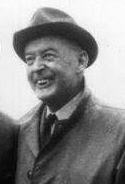 While employed at The Beatles' Apple Corporation, Paul took advantage of Margo Bird's presence by asking for her assistance in getting some of his possessions back. “I knew who had done it and I discovered that a lot of the stuff had already gone to America,” she recalls. “But I knew that there was one picture he particularly wanted back – a color-tinted picture of him in a '30s frame. I knew who had taken this and got it back for him.” Ian MacDonald's book “Revolution In The Head” claims that the stolen photograph that was then recovered was actually of Paul's father, which would make sense if it was a “color-tinted” photo that would have originally been taken in black-and-white and then housed in a “Thirties frame,” as Margo Bird relates. While employed at The Beatles' Apple Corporation, Paul took advantage of Margo Bird's presence by asking for her assistance in getting some of his possessions back. “I knew who had done it and I discovered that a lot of the stuff had already gone to America,” she recalls. “But I knew that there was one picture he particularly wanted back – a color-tinted picture of him in a '30s frame. I knew who had taken this and got it back for him.” Ian MacDonald's book “Revolution In The Head” claims that the stolen photograph that was then recovered was actually of Paul's father, which would make sense if it was a “color-tinted” photo that would have originally been taken in black-and-white and then housed in a “Thirties frame,” as Margo Bird relates.
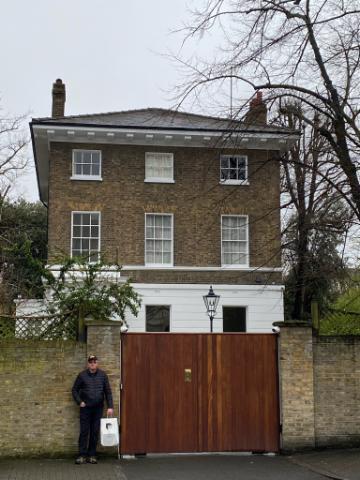 Diane Ashley, the fan who actually entered the McCartney residence at 7 Cavendish Avenue in London through his bathroom window, was quite surprised to hear that Paul included this event in the lyrics of a Beatles song. “I didn't believe it at first because he'd hated it so much when we broke in. But then I suppose anything can inspire a song, can't it? I know that all his neighbors rang him when they saw we'd got in and I'm sure that gave rise to the lines, 'Sunday's on the phone to Monday, Tuesday's on the phone to me.'” Diane Ashley, the fan who actually entered the McCartney residence at 7 Cavendish Avenue in London through his bathroom window, was quite surprised to hear that Paul included this event in the lyrics of a Beatles song. “I didn't believe it at first because he'd hated it so much when we broke in. But then I suppose anything can inspire a song, can't it? I know that all his neighbors rang him when they saw we'd got in and I'm sure that gave rise to the lines, 'Sunday's on the phone to Monday, Tuesday's on the phone to me.'”
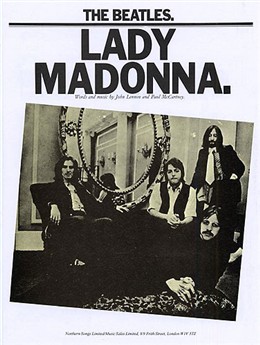 Her assumption about the significance of these lyrics seems to be confirmed by a rehearsal of the song by The Beatles at Twickenham Studios on January 9th, 1969, which begins with Paul stating, "and this is something that happened to me quite recently" and ends with Paul reenacting a phone call saying: 'Hello, this is Tuesday speaking. Is that Paul? I'd like to have a word with you.” John then continues with, "I've got something of interest in the garden." However, in his 2021 book "The Lyrics," Paul explains the significance of these lines differently. "I did have some out-of-the-ordinary ideas. For example, I used to see the days of the week in colors. Monday was black, Tuesday was yellow, Wednesday was green, Thursday was dark blue, Friday was red, Saturday was orange, Sunday was white. When I saw the name of the day of the week, I purtured them like that. It's a form of synaesthesia. So the lines 'Sunday's on the phone to Monday / Tuesday's on the phone to me' are particulary resonant for me. I use essentially the same device in 'Lady Madonna,' where I have 'Friday night arrives without a suitcase' and 'Sunday morning, creeping like a nun.' It seems to be fruitful ground for me." Out-of-the-ordinary indeed! Her assumption about the significance of these lyrics seems to be confirmed by a rehearsal of the song by The Beatles at Twickenham Studios on January 9th, 1969, which begins with Paul stating, "and this is something that happened to me quite recently" and ends with Paul reenacting a phone call saying: 'Hello, this is Tuesday speaking. Is that Paul? I'd like to have a word with you.” John then continues with, "I've got something of interest in the garden." However, in his 2021 book "The Lyrics," Paul explains the significance of these lines differently. "I did have some out-of-the-ordinary ideas. For example, I used to see the days of the week in colors. Monday was black, Tuesday was yellow, Wednesday was green, Thursday was dark blue, Friday was red, Saturday was orange, Sunday was white. When I saw the name of the day of the week, I purtured them like that. It's a form of synaesthesia. So the lines 'Sunday's on the phone to Monday / Tuesday's on the phone to me' are particulary resonant for me. I use essentially the same device in 'Lady Madonna,' where I have 'Friday night arrives without a suitcase' and 'Sunday morning, creeping like a nun.' It seems to be fruitful ground for me." Out-of-the-ordinary indeed!
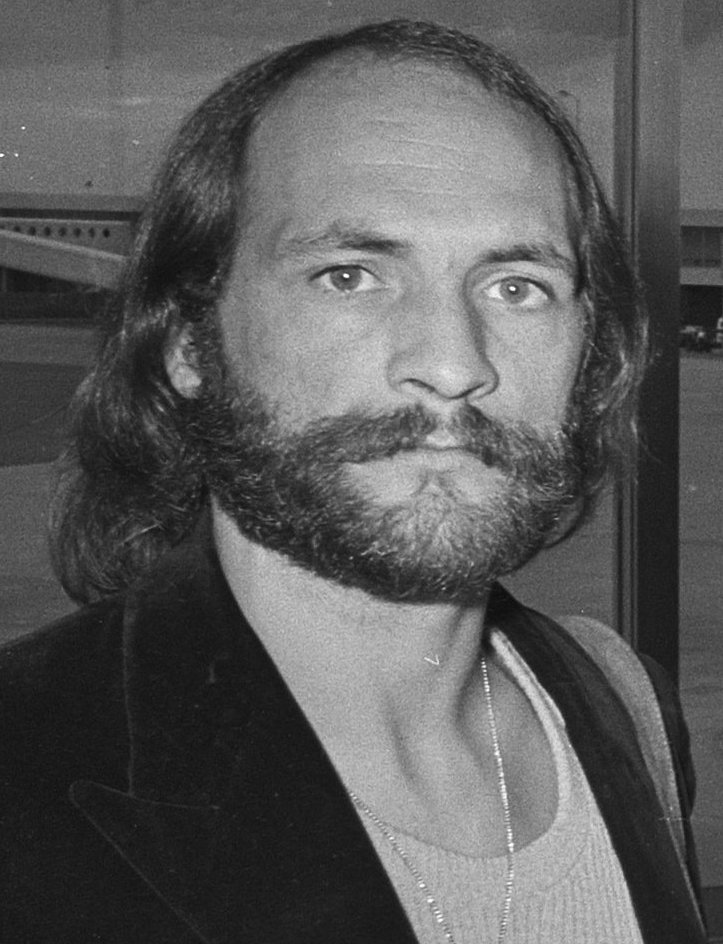 One alternate story that has circulated about the inspration for the song comes from a quote by Mike Pinder, original keyboard player for The Moody Blues. In the October 2006 Documentary "The Classic Artists Series: The Moody Blues," he relates an event that occured sometime in 1968/69 to their flautist / percussionist Ray Thomas at the house where the group was staying. "Ray was woken up in the night. And what had happened was the trap window of the bathroom was open, just letting air in, I presume. This girl climbed up the drainpipe and came in through the bathroom window...and went into Ray's room in the middle of the night. And I don't know what happened after that! But what I do know is that when I told John and Paul that story, the next thing we knew was 'She Came In Through The Bathroom Window.'" This could either have truly inspired the song or the same thing actually happened to Paul. Coincidences do happen after all! One alternate story that has circulated about the inspration for the song comes from a quote by Mike Pinder, original keyboard player for The Moody Blues. In the October 2006 Documentary "The Classic Artists Series: The Moody Blues," he relates an event that occured sometime in 1968/69 to their flautist / percussionist Ray Thomas at the house where the group was staying. "Ray was woken up in the night. And what had happened was the trap window of the bathroom was open, just letting air in, I presume. This girl climbed up the drainpipe and came in through the bathroom window...and went into Ray's room in the middle of the night. And I don't know what happened after that! But what I do know is that when I told John and Paul that story, the next thing we knew was 'She Came In Through The Bathroom Window.'" This could either have truly inspired the song or the same thing actually happened to Paul. Coincidences do happen after all!
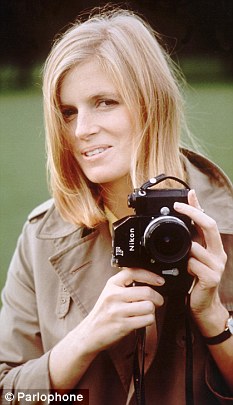 The song was not entirely written during their May 1968 visit to New York City, this being apparent by an event that happened during a cab ride taken by Paul, his girlfriend Linda Eastman and her daughter Heather to Kennedy Airport in New York City in October of 1968. The two of them went on a two week vacation just after the “White Album” was readied for release and, while in transit to the airport for their return flight to London, Paul noticed the driver's identification panel displayed in the cab. It identified the driver as, “Eugene Quits, New York Police Dept.” McCartney, who reportedly had his guitar with him at the time, came up with the line “and so I quit the police department and got myself a steady job,” humorously insinuating that driving a cab was more steady employment than being a police officer. "This was the great thing about the randomness of it all," Paul related. "'So I quit the police department' is part of the lyrics. If I hadn't been in this guy's cab, the song would have been very different." The song was not entirely written during their May 1968 visit to New York City, this being apparent by an event that happened during a cab ride taken by Paul, his girlfriend Linda Eastman and her daughter Heather to Kennedy Airport in New York City in October of 1968. The two of them went on a two week vacation just after the “White Album” was readied for release and, while in transit to the airport for their return flight to London, Paul noticed the driver's identification panel displayed in the cab. It identified the driver as, “Eugene Quits, New York Police Dept.” McCartney, who reportedly had his guitar with him at the time, came up with the line “and so I quit the police department and got myself a steady job,” humorously insinuating that driving a cab was more steady employment than being a police officer. "This was the great thing about the randomness of it all," Paul related. "'So I quit the police department' is part of the lyrics. If I hadn't been in this guy's cab, the song would have been very different."
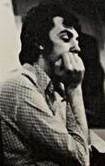 Paul's handwritten lyric sheet for the song shows that he originally titled it simply "Bathroom Window" and intended for the chorus to be repeated after the second verse as well as the first verse. It appears that he later omitted this because of its inclusion in the long "Abbey Road" medley, this redundancy extending the song a little more than was deemed necessary. The only deviation from this original lyric sheet was the line "I just knew what I could not say" changing to "Well I knew what I could not say." Paul's handwritten lyric sheet for the song shows that he originally titled it simply "Bathroom Window" and intended for the chorus to be repeated after the second verse as well as the first verse. It appears that he later omitted this because of its inclusion in the long "Abbey Road" medley, this redundancy extending the song a little more than was deemed necessary. The only deviation from this original lyric sheet was the line "I just knew what I could not say" changing to "Well I knew what I could not say."
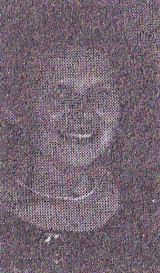 As for the lyric "protected by a silver spoon," Paul explains this in his book 'The Lyrics": "Even though (my mother) was never anything more than a nurse, or midwife, and my dad never anything more than a cotton salesman, we always thought of ourselves as posh working class. It's a mental attitude. Our attitude was posh. We aspired to do better in every department. We usually associate the idea of being 'born with a silver spoon in your mouth' with nobility, but even in my (albeit posh) working-class family, I was given a silver spoon at the time of my christening. I knew nothing about it until, years later, my Auntie Dyl told me that she had kept it safe for me. Literally and metaphorically, until my mum died, I had quite a lucky childhood. I was 'protected by a silver spoon.'" As for the lyric "protected by a silver spoon," Paul explains this in his book 'The Lyrics": "Even though (my mother) was never anything more than a nurse, or midwife, and my dad never anything more than a cotton salesman, we always thought of ourselves as posh working class. It's a mental attitude. Our attitude was posh. We aspired to do better in every department. We usually associate the idea of being 'born with a silver spoon in your mouth' with nobility, but even in my (albeit posh) working-class family, I was given a silver spoon at the time of my christening. I knew nothing about it until, years later, my Auntie Dyl told me that she had kept it safe for me. Literally and metaphorically, until my mum died, I had quite a lucky childhood. I was 'protected by a silver spoon.'"
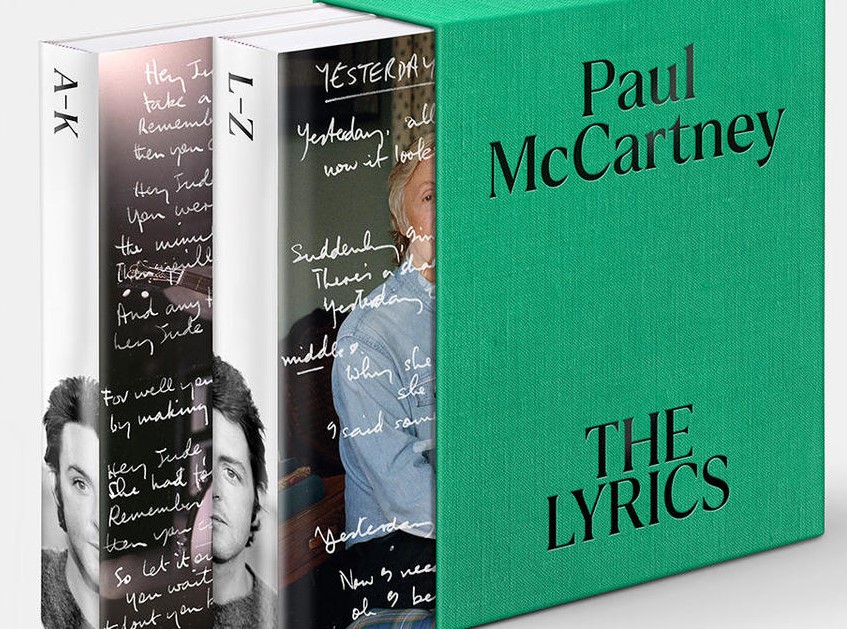 While a good portion of the remaining lyrics can be attributed to Paul filling out the details of his robbery with imaginary details, such as her being “a dancer” who "worked at fifteen clubs a day” and "could steal but she could not rob" ("a nice distinction if ever there was one" Paul stated in his book "The Lyrics"), the rest of the lyrics to the song appear to be cryptic or inside jokes, the meaning of which has never been revealed. "I think music can be a very visual art really," Paul asserts in "The Lyrics." "It's image driven. We can see the 'dancer' working 'fifteen clubs a day.' We can see the character 'quit the police department.'" How the intruder “wanders by the banks of her own lagoon,” we may never know. While a good portion of the remaining lyrics can be attributed to Paul filling out the details of his robbery with imaginary details, such as her being “a dancer” who "worked at fifteen clubs a day” and "could steal but she could not rob" ("a nice distinction if ever there was one" Paul stated in his book "The Lyrics"), the rest of the lyrics to the song appear to be cryptic or inside jokes, the meaning of which has never been revealed. "I think music can be a very visual art really," Paul asserts in "The Lyrics." "It's image driven. We can see the 'dancer' working 'fifteen clubs a day.' We can see the character 'quit the police department.'" How the intruder “wanders by the banks of her own lagoon,” we may never know.
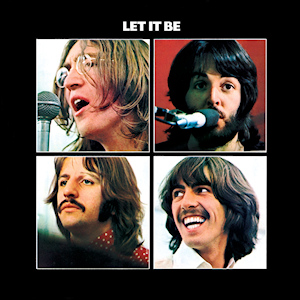 What we do know is that, evidenced by their rehearsals and run-throughs of the song during the recording of what became their “Let It Be” album, the lyrics were complete by January of 1969. John has never claimed any part in the authorship of the song, so this track is established as a McCartney-only composition. What we do know is that, evidenced by their rehearsals and run-throughs of the song during the recording of what became their “Let It Be” album, the lyrics were complete by January of 1969. John has never claimed any part in the authorship of the song, so this track is established as a McCartney-only composition.
Recording History
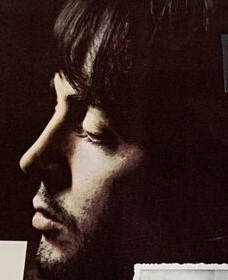 Paul may have begun writing "She Came In Through The Bathroom Window" in May of 1968, but it was in no way ready to be considered for inclusion on their next album, namely the "White Album." If it had been, Paul most likely would have included the song among the demos they recorded at George's 'Kinfauns' home in late May of that year. In fact, no actual demo of the song has ever surfaced. Paul may have begun writing "She Came In Through The Bathroom Window" in May of 1968, but it was in no way ready to be considered for inclusion on their next album, namely the "White Album." If it had been, Paul most likely would have included the song among the demos they recorded at George's 'Kinfauns' home in late May of that year. In fact, no actual demo of the song has ever surfaced.
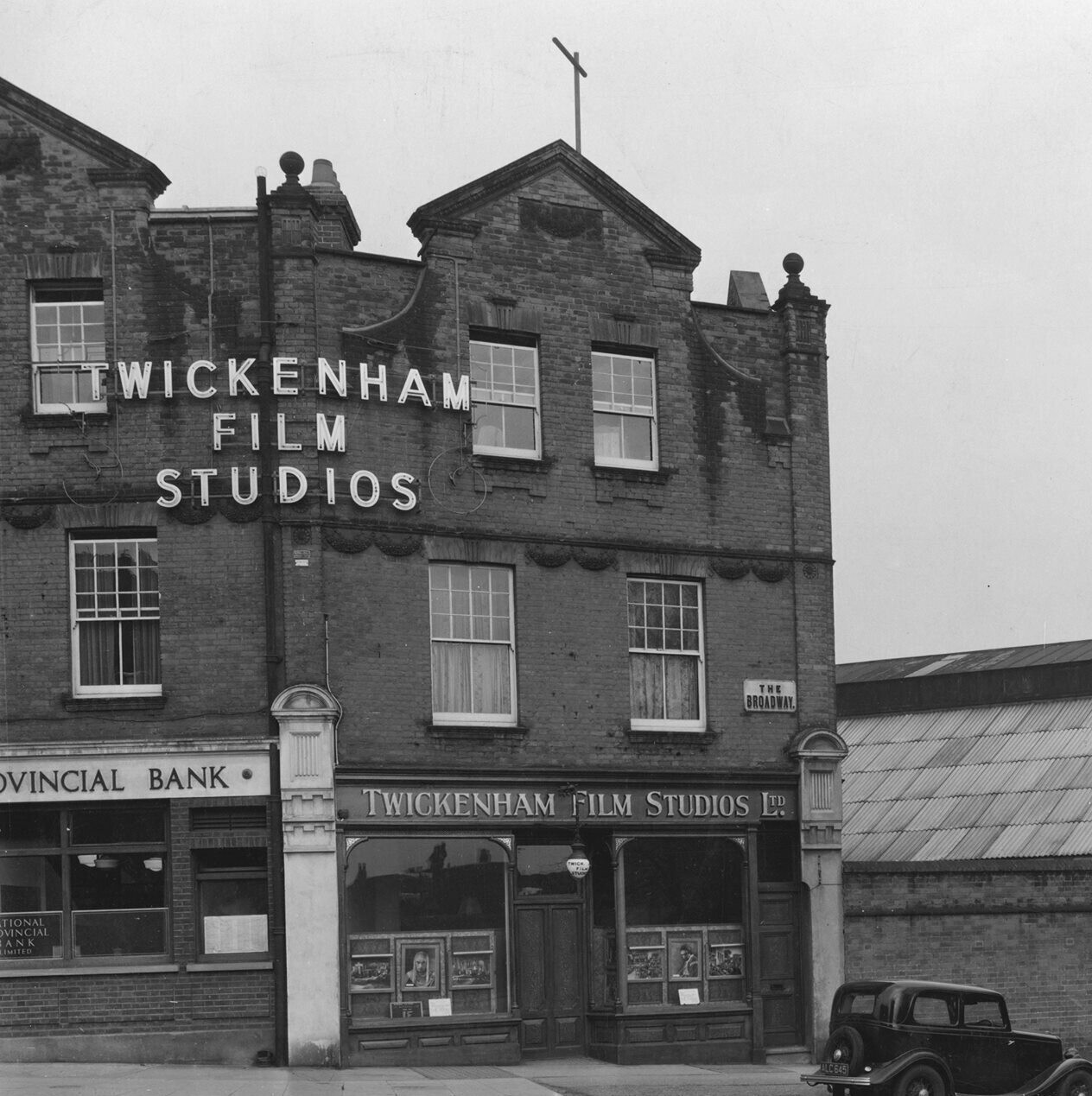 Instead, Paul appears to have first introduced the song to his band on January 6th, 1969, the third day of rehearsals at Twickenham Film Studios for what eventually became the “Let It Be” film and soundtrack album. He directed The Beatles through seven run-throughs of the song toward the end of the session on this day, teaching John and George the chords along the way. Being this early in the rehearsals for this project, Paul undoubtedly considered this a strong contender for the “Let It Be” project at the time. Instead, Paul appears to have first introduced the song to his band on January 6th, 1969, the third day of rehearsals at Twickenham Film Studios for what eventually became the “Let It Be” film and soundtrack album. He directed The Beatles through seven run-throughs of the song toward the end of the session on this day, teaching John and George the chords along the way. Being this early in the rehearsals for this project, Paul undoubtedly considered this a strong contender for the “Let It Be” project at the time.
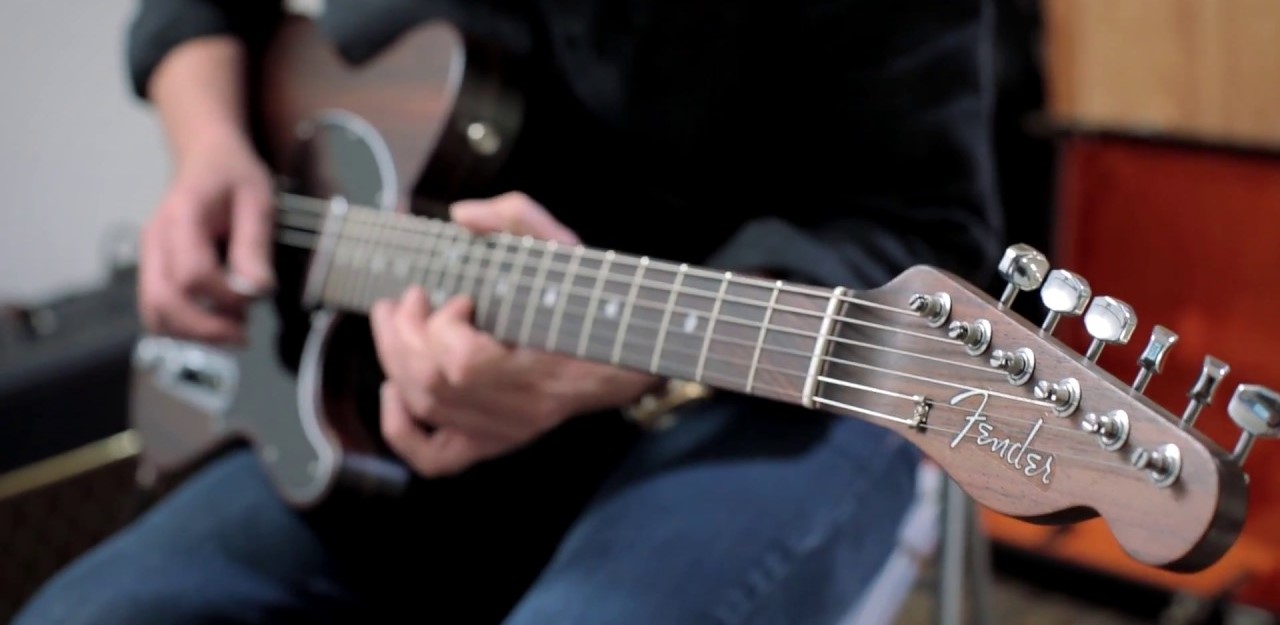 The group became more and more familiar with the song in the rehearsals that followed, four versions of it being done on January 7th, 1969, introduced by Paul by saying, "We know this one, don't we?' The rehearsal recorded on this day was at a similar tempo to what was eventually recorded six months later and released on the "Abbey Road" album. The song was usually rehearsed much slower, as on the one aimless version performed on January 8th and the seven further performances on January 9th, 1969. By this time, the band had worked out the arrangement of the song quite nicely, John joining in proficiently on harmony vocals during the choruses. The instrumentation during these rehearsals was Paul on bass on lead vocals, John on piano and harmony vocals, George on his Fender Telecaster run through a Leslie speaker and wah pedal, and Ringo on drums. The group became more and more familiar with the song in the rehearsals that followed, four versions of it being done on January 7th, 1969, introduced by Paul by saying, "We know this one, don't we?' The rehearsal recorded on this day was at a similar tempo to what was eventually recorded six months later and released on the "Abbey Road" album. The song was usually rehearsed much slower, as on the one aimless version performed on January 8th and the seven further performances on January 9th, 1969. By this time, the band had worked out the arrangement of the song quite nicely, John joining in proficiently on harmony vocals during the choruses. The instrumentation during these rehearsals was Paul on bass on lead vocals, John on piano and harmony vocals, George on his Fender Telecaster run through a Leslie speaker and wah pedal, and Ringo on drums.
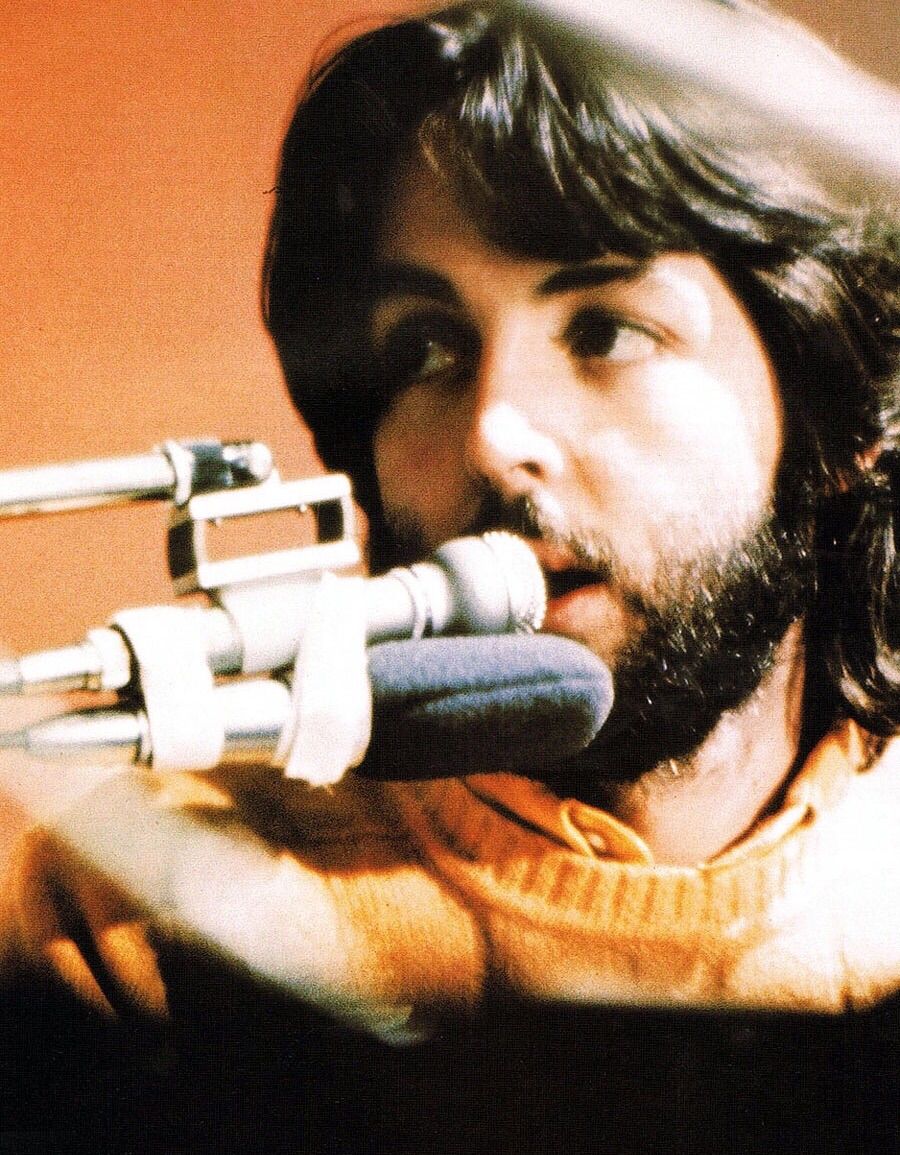 The Beatles got quite silly during the rehearsals of the song on January 9th, one version being documented by a technician to have happened at “one o'clock” that was counted out by Paul in German and featuring some lead vocals by John in a thick Cockney accent. Paul would then provide off-the-cuff responses to fill in the spaces left after each of John's lead vocal lines, such as “a bloody spoon, a bloody spoon, a bloody silver spoon.” Another rehearsal of the song, as witnessed on the 2021 Peter Jackson "Get Back" series, begins with Paul asking, "So, do you want to try another one? Once more...," to which John responds "...with feeling," prompting Paul to counter with "...with Felix!" The second verse has Paul altering the lyrics to “and though she thought I had the answer, I just had to sail away.” The third verse then included this Paul / John interchange: The Beatles got quite silly during the rehearsals of the song on January 9th, one version being documented by a technician to have happened at “one o'clock” that was counted out by Paul in German and featuring some lead vocals by John in a thick Cockney accent. Paul would then provide off-the-cuff responses to fill in the spaces left after each of John's lead vocal lines, such as “a bloody spoon, a bloody spoon, a bloody silver spoon.” Another rehearsal of the song, as witnessed on the 2021 Peter Jackson "Get Back" series, begins with Paul asking, "So, do you want to try another one? Once more...," to which John responds "...with feeling," prompting Paul to counter with "...with Felix!" The second verse has Paul altering the lyrics to “and though she thought I had the answer, I just had to sail away.” The third verse then included this Paul / John interchange:
Paul: “And so I quit the police department.”
John: “Get a job, cop!”
Paul: “And got myself a proper job.”
John: “Bloody 'bout time too, if you ask me.”
Paul: “And though she tried her best to help me.”
John: “You bloody need it, too.”
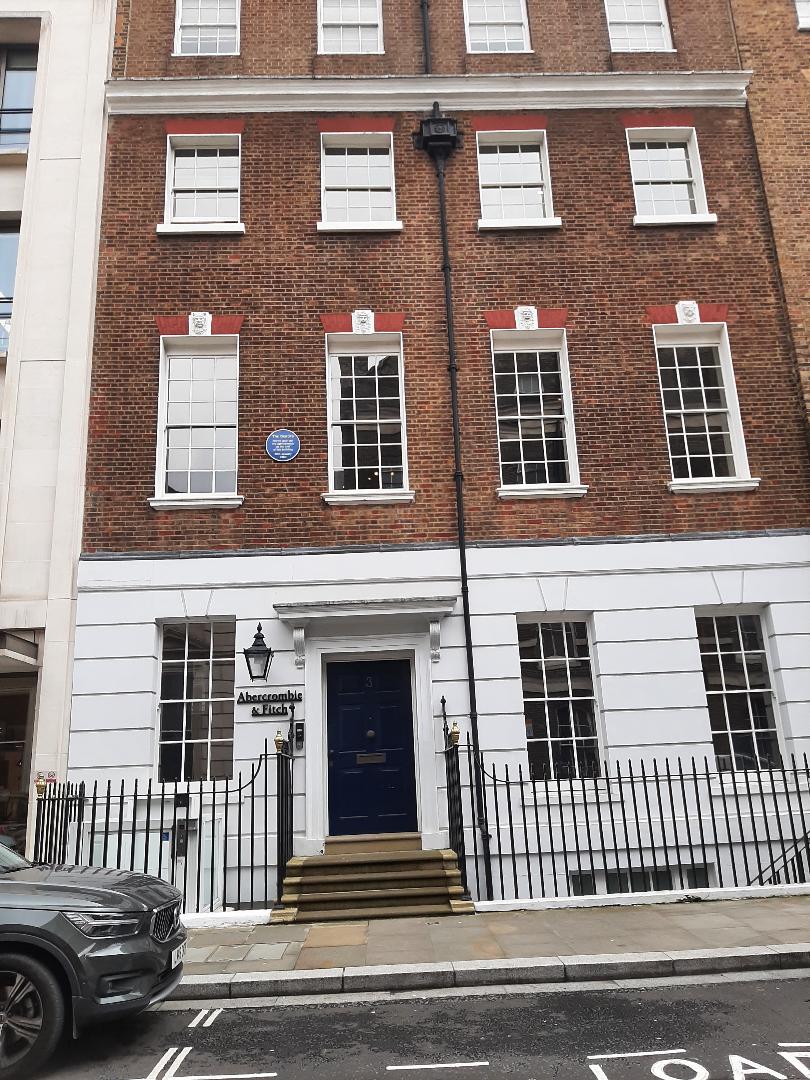 After a week long break from rehearsals (which included George temporarily quitting The Beatles) they reconvened in Apple Studios on Saville Row to resume work in preparation for the "Let It Be" project. Five versions of “She Came In Through The Bathroom Window” were included on their first day back, January 21st, 1969, these performances being quite plodding and less spirited but still satisfying. After a week long break from rehearsals (which included George temporarily quitting The Beatles) they reconvened in Apple Studios on Saville Row to resume work in preparation for the "Let It Be" project. Five versions of “She Came In Through The Bathroom Window” were included on their first day back, January 21st, 1969, these performances being quite plodding and less spirited but still satisfying.
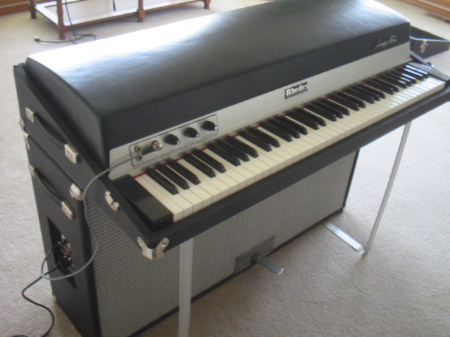 Recordings of the rehearsals on this day were featured on both the 1996 released compilation album “Anthology 3” and on the Super Deluxe editions of the "Let It Be" album, the former release mistakenly identifying the rehearsal as happening on January 22nd. The instrumentation is the same as before, the exception being John playing a Fender Rhodes electric piano instead of an acoustic piano. Interestingly, the structure of the song at this point was 'verse/ chorus/ verse/ chorus/ verse/ chorus/ chorus' (or abababb), which was altered many months later since it would become somewhat of a truncated version of the song for inclusion in the long “Abbey Road” medley. Recordings of the rehearsals on this day were featured on both the 1996 released compilation album “Anthology 3” and on the Super Deluxe editions of the "Let It Be" album, the former release mistakenly identifying the rehearsal as happening on January 22nd. The instrumentation is the same as before, the exception being John playing a Fender Rhodes electric piano instead of an acoustic piano. Interestingly, the structure of the song at this point was 'verse/ chorus/ verse/ chorus/ verse/ chorus/ chorus' (or abababb), which was altered many months later since it would become somewhat of a truncated version of the song for inclusion in the long “Abbey Road” medley.
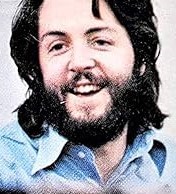 At the conclusion of this run-through of the song, as included on “Anthology 3,” Paul commends John's performance on electric piano by saying: “See, what you were doing then, that sounded like, that's the kind of thing that would be nice, to have one of the verses like that. Like a classical...(demonstrates)...you know, that kind of variation that it needs a bit.” At the conclusion of this run-through of the song, as included on “Anthology 3,” Paul commends John's performance on electric piano by saying: “See, what you were doing then, that sounded like, that's the kind of thing that would be nice, to have one of the verses like that. Like a classical...(demonstrates)...you know, that kind of variation that it needs a bit.”
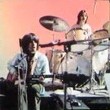 Paul still felt confident about the song being included in the “Let It Be” project throughout the following week, the group running through it again once on January 24th and then five more times on January 29th, 1969, the day before the famous live rooftop performance. However, despite all their hard work on the song, The Beatles deemed the song unsuitable for the roof show as well as the final studio sessions on January 31st, 1969. Thereafter, “She Came In Through The Bathroom Window” was shelved for the time being. Paul still felt confident about the song being included in the “Let It Be” project throughout the following week, the group running through it again once on January 24th and then five more times on January 29th, 1969, the day before the famous live rooftop performance. However, despite all their hard work on the song, The Beatles deemed the song unsuitable for the roof show as well as the final studio sessions on January 31st, 1969. Thereafter, “She Came In Through The Bathroom Window” was shelved for the time being.
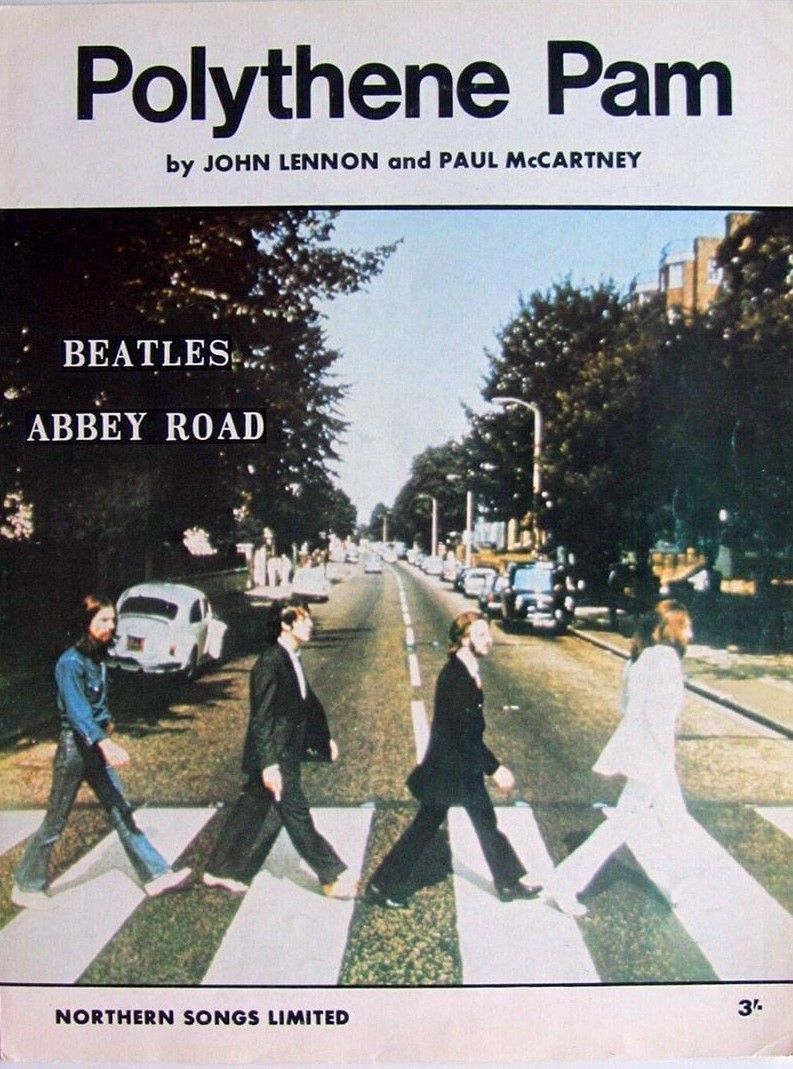 Then came the May 1969 brainstorm from Paul to incorporate unfinished and unrecorded compositions into one long medley to fill a full side of an album, this idea being incorporated onto their next album, “Abbey Road.” “She Came In Through The Bathroom Window” was an obvious candidate for this project, so Paul dusted it off and worked it into the medley following John's unfinished composition “Polythene Pam,” both compositions being recorded together with an appropriate segue that the band would compose together. Then came the May 1969 brainstorm from Paul to incorporate unfinished and unrecorded compositions into one long medley to fill a full side of an album, this idea being incorporated onto their next album, “Abbey Road.” “She Came In Through The Bathroom Window” was an obvious candidate for this project, so Paul dusted it off and worked it into the medley following John's unfinished composition “Polythene Pam,” both compositions being recorded together with an appropriate segue that the band would compose together.
 The first recording session for the “Polythene Pam / She Came In Through The Bathroom Window” section of the medley occurred on July 25th, 1969 in EMI Studio Two, the session beginning at 2:30 pm. After the group performed overdubs onto “Sun King,” “Mean Mr. Mustard” and “Come Together,” the primary focus of the session was recording the rhythm track of this new composite medley section. It took 39 takes of the rhythm track until they were happy with the results, the instrumentation being Paul on bass (track one), Ringo on drums (track two), John on 12-string acoustic guitar (track three), George on his Gibson Les Paul (track four) and Paul's guide vocals (track six). “They were fun tracks to record, and the ensemble playing was superb,” engineer Geoff Emerick recounts about this session in his book “Here, There And Everywhere.” The first recording session for the “Polythene Pam / She Came In Through The Bathroom Window” section of the medley occurred on July 25th, 1969 in EMI Studio Two, the session beginning at 2:30 pm. After the group performed overdubs onto “Sun King,” “Mean Mr. Mustard” and “Come Together,” the primary focus of the session was recording the rhythm track of this new composite medley section. It took 39 takes of the rhythm track until they were happy with the results, the instrumentation being Paul on bass (track one), Ringo on drums (track two), John on 12-string acoustic guitar (track three), George on his Gibson Les Paul (track four) and Paul's guide vocals (track six). “They were fun tracks to record, and the ensemble playing was superb,” engineer Geoff Emerick recounts about this session in his book “Here, There And Everywhere.”
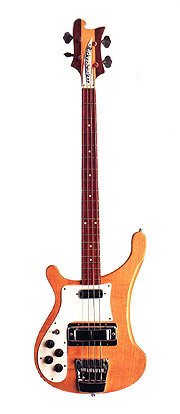 "Take 27" can be heard in its entirety on various 50th Anniversary releases of "Abbey Road." While it was confidently performed throughout, George's ad lib lead guitar parts had yet to be suitably worked out. Paul's guide vocal was delivered in a perfuctory manner, since it would be replaced later as an overdub. However, after "take 39" was deemed suitable at around 10:30 pm, Ringo then replaced his drum part at John's request (see the Recording History section for “Polythene Pam” for more details) and Paul re-recorded his bass part as well as replacing his guide vocal with a proper lead vocal overdub. This took the session to 2:30 am the following morning, leaving more overdub work for another day. "Take 27" can be heard in its entirety on various 50th Anniversary releases of "Abbey Road." While it was confidently performed throughout, George's ad lib lead guitar parts had yet to be suitably worked out. Paul's guide vocal was delivered in a perfuctory manner, since it would be replaced later as an overdub. However, after "take 39" was deemed suitable at around 10:30 pm, Ringo then replaced his drum part at John's request (see the Recording History section for “Polythene Pam” for more details) and Paul re-recorded his bass part as well as replacing his guide vocal with a proper lead vocal overdub. This took the session to 2:30 am the following morning, leaving more overdub work for another day.
 Those additional overdubs began on July 28th, 1969, in EMI Studio Three at 2:30 pm. Paul double-tracked his lead vocal performance on this day as well as adding some electric and acoustic piano parts, instruments that John had played in their January rehearsals of the song. Mark Lewisohn's book “The Beatles Recording Sessions” also stipulates that both acoustic and electric guitars were overdubbed on this day, undoubtedly played by John and George respectively, as well as tambourine and “other bits of percussion,” such as handclaps presumably from Paul and cowbell and maracas as heard on the finished recording, these no doubt being played by Ringo. The session ended at 8 pm, although they convened in the control room of EMI Studio Two for the next half hour to facilitate the engineering team doing a tape reduction to open up more tracks for yet more overdubs, turning "take 39" into "take 40." This brought the session's conclusion to 8:30 pm. Those additional overdubs began on July 28th, 1969, in EMI Studio Three at 2:30 pm. Paul double-tracked his lead vocal performance on this day as well as adding some electric and acoustic piano parts, instruments that John had played in their January rehearsals of the song. Mark Lewisohn's book “The Beatles Recording Sessions” also stipulates that both acoustic and electric guitars were overdubbed on this day, undoubtedly played by John and George respectively, as well as tambourine and “other bits of percussion,” such as handclaps presumably from Paul and cowbell and maracas as heard on the finished recording, these no doubt being played by Ringo. The session ended at 8 pm, although they convened in the control room of EMI Studio Two for the next half hour to facilitate the engineering team doing a tape reduction to open up more tracks for yet more overdubs, turning "take 39" into "take 40." This brought the session's conclusion to 8:30 pm.
 The final overdubs for “She Came In Through The Bathroom Window” occurred on July 30th, 1969, in EMI Studio Three, this session beginning at 3:30 pm. After overdubbing another guitar onto “Come Together,” John, Paul and George added their harmony vocals as well as guitar and percussion overdubs onto “Bathroom Window” before turning their attention to adding more vocals onto two other sections of the long “Abbey Road” medley. With this complete, everyone filed into the control room of EMI Studio Two at 10:30 pm to put together a make-shift edit of the segments of the medley to see how they all fit together. The first step in doing this was to create quick stereo mixes of each segment, these mixes being made by producer George Martin and engineers Geoff Emerick, Phil McDonald and John Kurlander. They then took to editing all the segments together and, with some slight alterations, were quite happy with the results. A mix of this trial edit was included in various 50th Anniversary editions of "Abbey Road," which is quite similar to the released version but with a quiet though noticeable trademark "whoooo" from Paul just after the line "fifteen clubs a day" and George's lead guitar work appearing without any effects applied. By 2:30 am the following morning, this session ended, the recording of "She Came In Through The Bathroom Window" now complete. The final overdubs for “She Came In Through The Bathroom Window” occurred on July 30th, 1969, in EMI Studio Three, this session beginning at 3:30 pm. After overdubbing another guitar onto “Come Together,” John, Paul and George added their harmony vocals as well as guitar and percussion overdubs onto “Bathroom Window” before turning their attention to adding more vocals onto two other sections of the long “Abbey Road” medley. With this complete, everyone filed into the control room of EMI Studio Two at 10:30 pm to put together a make-shift edit of the segments of the medley to see how they all fit together. The first step in doing this was to create quick stereo mixes of each segment, these mixes being made by producer George Martin and engineers Geoff Emerick, Phil McDonald and John Kurlander. They then took to editing all the segments together and, with some slight alterations, were quite happy with the results. A mix of this trial edit was included in various 50th Anniversary editions of "Abbey Road," which is quite similar to the released version but with a quiet though noticeable trademark "whoooo" from Paul just after the line "fifteen clubs a day" and George's lead guitar work appearing without any effects applied. By 2:30 am the following morning, this session ended, the recording of "She Came In Through The Bathroom Window" now complete.
 Then came creating the perfected stereo mix of the song that would be released, as well as the perfected editing of the track into the full “Abbey Road” medley. Both of these things happened on August 14th, 1969, in the control room of EMI Studio Two during a 12-hour session that stretched from 2:30 pm to 2:30 am the following morning. Amongst other stereo mixes for the medley, an edit piece for “Maxwell's Silver Hammer” and a recorded John Lennon interview with Kenny Everett, it took thirteen attempts to get a suitable stereo mix for “Polythene Pam / She Came In Through The Bathroom Window,” these designated as remixes 20 through 32. With Paul's piano overdubs buried in the mix, "take 32" was deemed best, this then being suitably edited together with remix 22 of “Sun King / Mean Mr. Mustard,” these mixes and editing performed by George Martin and engineers Geoff Emerick, Phil McDonald and Alan Parsons. Then came creating the perfected stereo mix of the song that would be released, as well as the perfected editing of the track into the full “Abbey Road” medley. Both of these things happened on August 14th, 1969, in the control room of EMI Studio Two during a 12-hour session that stretched from 2:30 pm to 2:30 am the following morning. Amongst other stereo mixes for the medley, an edit piece for “Maxwell's Silver Hammer” and a recorded John Lennon interview with Kenny Everett, it took thirteen attempts to get a suitable stereo mix for “Polythene Pam / She Came In Through The Bathroom Window,” these designated as remixes 20 through 32. With Paul's piano overdubs buried in the mix, "take 32" was deemed best, this then being suitably edited together with remix 22 of “Sun King / Mean Mr. Mustard,” these mixes and editing performed by George Martin and engineers Geoff Emerick, Phil McDonald and Alan Parsons.
 Sometime in 1996, George Martin and Geoff Emerick reconvened to create a mix of the January 21st, 1969 rehearsal of the song, as detailed above, for inclusion on the “Anthology 3” album. Then, sometime in 2019, George Martin's son Giles Martin, along with engineer Sam Okell, created a vibrant new stereo mix of the song for inclusion in 50th Anniversary editions of the "Abbey Road" album. While they were at it, they also created a mix of "take 27," as recorded on July 25th, 1969, as well as a stereo mix of the trial edit of the entire "Abbey Road" medley from July 30th, 1969. Sometime in 1996, George Martin and Geoff Emerick reconvened to create a mix of the January 21st, 1969 rehearsal of the song, as detailed above, for inclusion on the “Anthology 3” album. Then, sometime in 2019, George Martin's son Giles Martin, along with engineer Sam Okell, created a vibrant new stereo mix of the song for inclusion in 50th Anniversary editions of the "Abbey Road" album. While they were at it, they also created a mix of "take 27," as recorded on July 25th, 1969, as well as a stereo mix of the trial edit of the entire "Abbey Road" medley from July 30th, 1969.
 In 2021, Giles Martin and engineer Sam Okell set out to create new mixes for an Anniversary version of the "Let It Be" album. In the process they thought to also create a new mix of "She Came In Through The Bathroom Window" as recorded by the group during rehearsals at Apple Studios on January 21st, 1969, since this song was a contender for the "Let It Be" project at the time. This stereo mix was included on the "Super Deluxe" editions of the album released later that year. In 2021, Giles Martin and engineer Sam Okell set out to create new mixes for an Anniversary version of the "Let It Be" album. In the process they thought to also create a new mix of "She Came In Through The Bathroom Window" as recorded by the group during rehearsals at Apple Studios on January 21st, 1969, since this song was a contender for the "Let It Be" project at the time. This stereo mix was included on the "Super Deluxe" editions of the album released later that year.
Song Structure and Style
 The structure of "She Came In Through The Bathroom Window," as contained on the "Abbey Road" album, parses out to 'verse/ refrain/ verse/ verse/ refrain' (or abaab). As heard in various bootlegs and rehearsals, however, Paul's original intention for the structure of the song contained two more refrains, one slotted between the second and third verse and the other at the very end of the song, which would have resulted in two refrains heard back to back. But since the decision was later made to incorporate this song into the long "Abbey Road" medley, Paul decided to omit these two refrains so as to make the track more concise. The structure of "She Came In Through The Bathroom Window," as contained on the "Abbey Road" album, parses out to 'verse/ refrain/ verse/ verse/ refrain' (or abaab). As heard in various bootlegs and rehearsals, however, Paul's original intention for the structure of the song contained two more refrains, one slotted between the second and third verse and the other at the very end of the song, which would have resulted in two refrains heard back to back. But since the decision was later made to incorporate this song into the long "Abbey Road" medley, Paul decided to omit these two refrains so as to make the track more concise.
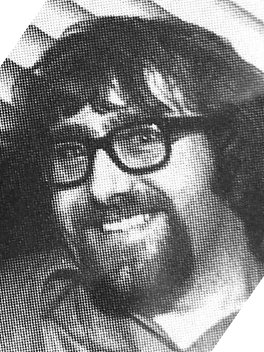 The first element of the song, however, is a three-measure introduction that is a wind-down from the previous track “Polythene Pam.” The first two measures act as a suitable segue between the two tracks, shifting the key from E major to A major in the process. The instrumentation for these two measures consists of George on electric guitar, John on 12-string acoustic guitar and ad lib vocal (exclaiming an address to their assistant Mal Evans, “Listen to that, Mal,” a chuckle, and then, “oh, look out”), Paul on bass, and Ringo on drums, tambourine, maracas and cowbell. The third measure lands the song on A major and, while the group performs a 'Beatles break,' Paul's double-tracked lead vocal kicks in to sing the song's title while Ringo's crashed cymbal rings out and his tambourine shakes violently. This third measure concludes with Ringo performing a drum fill to usher in the first verse that follows. The first element of the song, however, is a three-measure introduction that is a wind-down from the previous track “Polythene Pam.” The first two measures act as a suitable segue between the two tracks, shifting the key from E major to A major in the process. The instrumentation for these two measures consists of George on electric guitar, John on 12-string acoustic guitar and ad lib vocal (exclaiming an address to their assistant Mal Evans, “Listen to that, Mal,” a chuckle, and then, “oh, look out”), Paul on bass, and Ringo on drums, tambourine, maracas and cowbell. The third measure lands the song on A major and, while the group performs a 'Beatles break,' Paul's double-tracked lead vocal kicks in to sing the song's title while Ringo's crashed cymbal rings out and his tambourine shakes violently. This third measure concludes with Ringo performing a drum fill to usher in the first verse that follows.
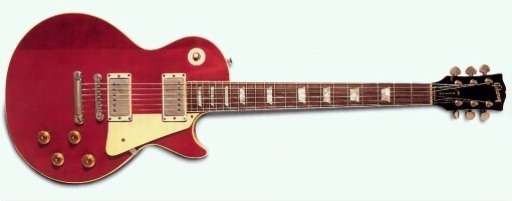 The first verse, like all the rest, is seven measures long. The instrumentation for this first verse is the same as the introduction minus Ringo's extra percussion instruments. In addition, John, Paul and George's background vocals provide a backwash while George fills in the gaps left by Paul's lead vocals with tasty lead guitar lines. Ringo rides on the hi-hat throughout while crashing a cymbal sporadically, providing drum fills in measures three and five. The seventh measure consists of another 'Beatles break' while Paul and John harmonize on the first line of the refrain that follows, namely, “Didn't anybody tell her” (the last word actually appearing in the first measure of the refrain). Ringo simultaneously introduces the refrain with a pounding drum fill. The first verse, like all the rest, is seven measures long. The instrumentation for this first verse is the same as the introduction minus Ringo's extra percussion instruments. In addition, John, Paul and George's background vocals provide a backwash while George fills in the gaps left by Paul's lead vocals with tasty lead guitar lines. Ringo rides on the hi-hat throughout while crashing a cymbal sporadically, providing drum fills in measures three and five. The seventh measure consists of another 'Beatles break' while Paul and John harmonize on the first line of the refrain that follows, namely, “Didn't anybody tell her” (the last word actually appearing in the first measure of the refrain). Ringo simultaneously introduces the refrain with a pounding drum fill.
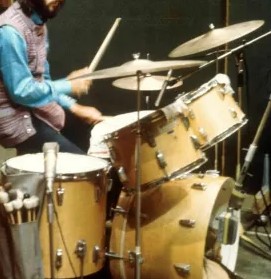 The refrain is eight measures long, all measures being in 4/4 time as were the verses, with the exception of the seventh measure which is in 2/4 time with an anticipated downbeat. Paul and John continue to harmonize the vocals throughout the refrain while they continue to play bass and acoustic guitar respectively, as before. George continues to fill in the gaps with vibrant guitar lines while Ringo plays drums and adds in a tambourine overdub. Ringo adds drum fills in measures three and five while the group puts in some interesting accents in measure five as well. At the end of measure seven, another 'Beatles break' appears, John being tripped up by the anticipated downbeat as evidenced by his late strum on acoustic guitar. Paul here begins the first line of the second verse, “She said she'd always been a dancer” while Ringo adds in yet another drum fill. The refrain is eight measures long, all measures being in 4/4 time as were the verses, with the exception of the seventh measure which is in 2/4 time with an anticipated downbeat. Paul and John continue to harmonize the vocals throughout the refrain while they continue to play bass and acoustic guitar respectively, as before. George continues to fill in the gaps with vibrant guitar lines while Ringo plays drums and adds in a tambourine overdub. Ringo adds drum fills in measures three and five while the group puts in some interesting accents in measure five as well. At the end of measure seven, another 'Beatles break' appears, John being tripped up by the anticipated downbeat as evidenced by his late strum on acoustic guitar. Paul here begins the first line of the second verse, “She said she'd always been a dancer” while Ringo adds in yet another drum fill.
 The second verse then appears, the instrumentation now omitting the backing vocals as heard in the first verse. Instead we hear sporadic handclaps in random places throughout the verse while Ringo keeps a steady beat on drums, omitting drum fills except for the final seventh measure after the 'Beatles break.' This last measure also includes a swell of background vocals which continues into the third verse that follows. This third verse returns to the instrumentation of the first verse, Ringo's third and fifth measure drum fills included. The background vocals swoop somewhat differently in this third verse, while George's guitar runs alter appropriately as well. The second verse then appears, the instrumentation now omitting the backing vocals as heard in the first verse. Instead we hear sporadic handclaps in random places throughout the verse while Ringo keeps a steady beat on drums, omitting drum fills except for the final seventh measure after the 'Beatles break.' This last measure also includes a swell of background vocals which continues into the third verse that follows. This third verse returns to the instrumentation of the first verse, Ringo's third and fifth measure drum fills included. The background vocals swoop somewhat differently in this third verse, while George's guitar runs alter appropriately as well.
 The second refrain comes next, this one only seven measures long due to being the final segment of the song with nothing to segue into. Instead, the seventh measure in 2/4 time that ends with the anticipated downbeat completes the song, Paul emphasizing the final two beats with the words “Oh, yeah.” The arrangement and instrumentation here is identical to the previous refrain, George altering his lead guitar lines once again, leaving his final note ringing as the song fades away. Although there are three more segments to the “Abbey Road” medley yet to come, “Bathroom Window” fades to silence as a sort of intermission, giving both them and us a chance to regroup and prepare for what could be referred to as "act two." The second refrain comes next, this one only seven measures long due to being the final segment of the song with nothing to segue into. Instead, the seventh measure in 2/4 time that ends with the anticipated downbeat completes the song, Paul emphasizing the final two beats with the words “Oh, yeah.” The arrangement and instrumentation here is identical to the previous refrain, George altering his lead guitar lines once again, leaving his final note ringing as the song fades away. Although there are three more segments to the “Abbey Road” medley yet to come, “Bathroom Window” fades to silence as a sort of intermission, giving both them and us a chance to regroup and prepare for what could be referred to as "act two."
American Releases
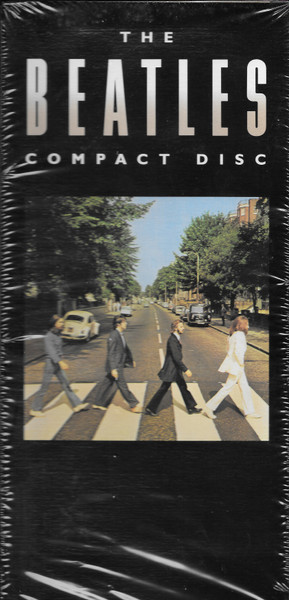 On October 1st, 1969, the final recorded Beatles album was released in America, simply titled "Abbey Road." "She Came In Through The Bathroom Window" is the seventh track on side two of the album and the fifth named track of the long medley that takes up the majority of this second side of the album. The "Abbey Road" album took only three weeks to jump into the top spot on the Billboard album chart, raking in a total of eleven weeks in the #1 position. The album first appeared on compact disc on October 10th, 1987, and then as a remastered release on September 9th, 2009. Then on September 27th, 2019, a newly mixed version was released on vinyl and compact disc in connection with the album's 50th Anniversary, not to mention an opaque green vinyl edition coming out on October 10th, 2025 as an exclusive release available only at Target Department Stores. On October 1st, 1969, the final recorded Beatles album was released in America, simply titled "Abbey Road." "She Came In Through The Bathroom Window" is the seventh track on side two of the album and the fifth named track of the long medley that takes up the majority of this second side of the album. The "Abbey Road" album took only three weeks to jump into the top spot on the Billboard album chart, raking in a total of eleven weeks in the #1 position. The album first appeared on compact disc on October 10th, 1987, and then as a remastered release on September 9th, 2009. Then on September 27th, 2019, a newly mixed version was released on vinyl and compact disc in connection with the album's 50th Anniversary, not to mention an opaque green vinyl edition coming out on October 10th, 2025 as an exclusive release available only at Target Department Stores.
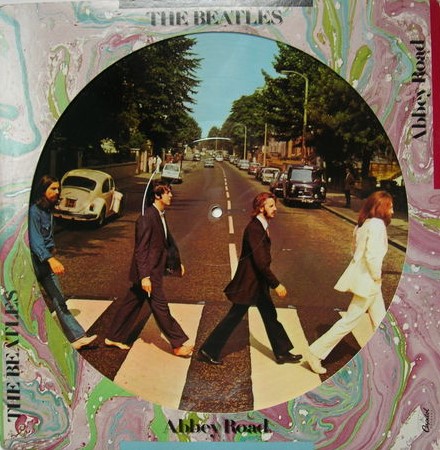 Sometime in 1978, Capitol re-released the “Abbey Road” album as a picture disc. Side one had the iconic front cover while side two contained a close-up of the wall photo of the back cover minus the song title listings. This release quickly went out of print but was re-released on 180-gram vinyl on September 27th, 2019. Sometime in 1978, Capitol re-released the “Abbey Road” album as a picture disc. Side one had the iconic front cover while side two contained a close-up of the wall photo of the back cover minus the song title listings. This release quickly went out of print but was re-released on 180-gram vinyl on September 27th, 2019.
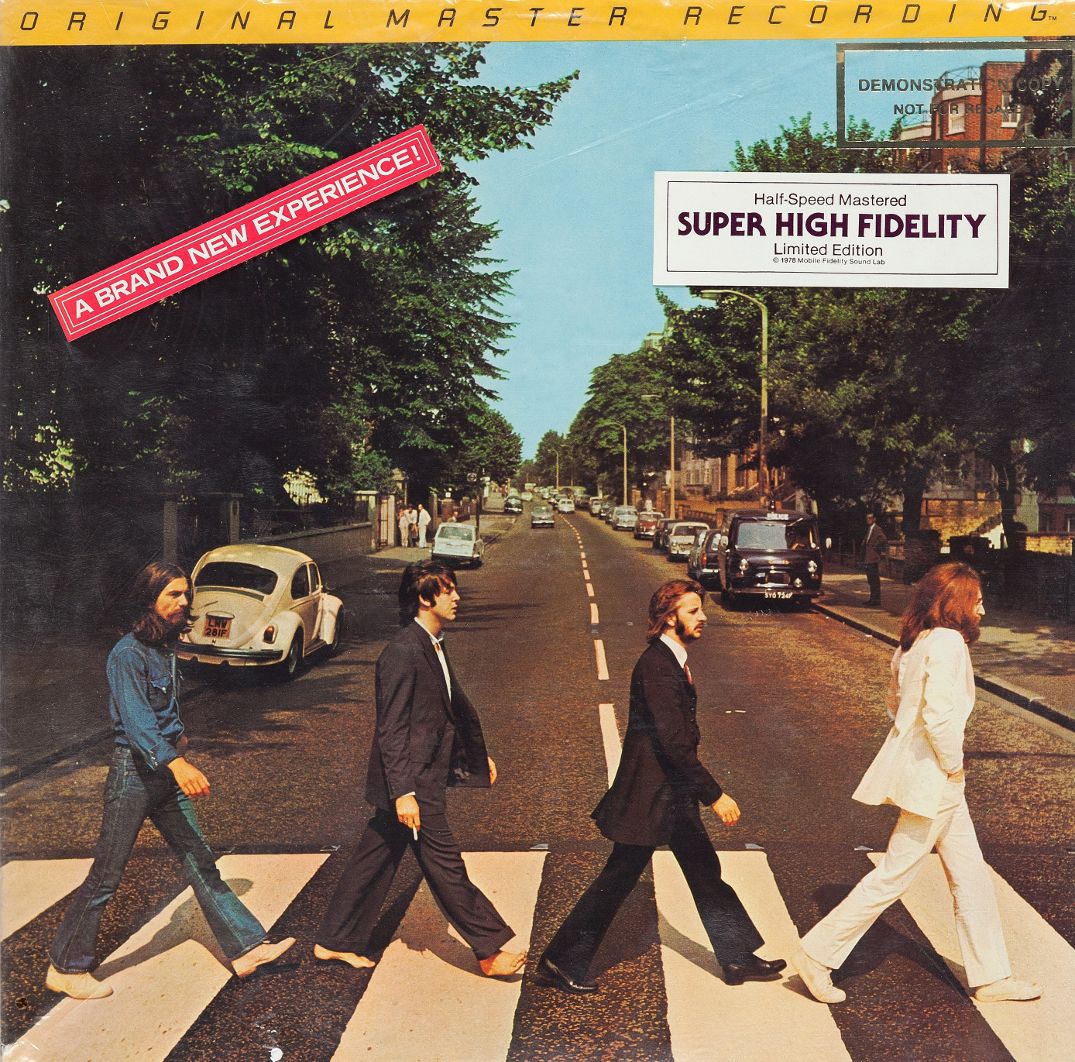 An interesting US vinyl edition of “Abbey Road” was released on December 28th, 1979, this being manufactured by Mobile Fidelity Sound Lab in Chatsworth, California as the first Beatles installment in their "Original Master Recording" series. Their practice was to prepare a new master utilizing half-speed mastering technology from the original master tapes, in this case using the leased sub-master from Capitol Records. Stickers on the shrinkwrap proclaimed this album as being “A Brand New Experience,” which proved to be the case. This version of the album sounded superior to all previous British and American pressings at that time. Unfortunately, this excellent edition of “Abbey Road” was only available for a short time and is quite collectible today. An interesting US vinyl edition of “Abbey Road” was released on December 28th, 1979, this being manufactured by Mobile Fidelity Sound Lab in Chatsworth, California as the first Beatles installment in their "Original Master Recording" series. Their practice was to prepare a new master utilizing half-speed mastering technology from the original master tapes, in this case using the leased sub-master from Capitol Records. Stickers on the shrinkwrap proclaimed this album as being “A Brand New Experience,” which proved to be the case. This version of the album sounded superior to all previous British and American pressings at that time. Unfortunately, this excellent edition of “Abbey Road” was only available for a short time and is quite collectible today.
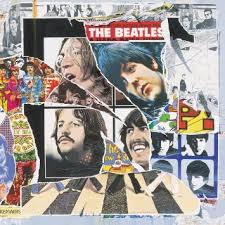 October 28th, 1996 was the release date for the album “Anthology 3” which contains the rehearsal of “She Came In Through The Bathroom Window” that they performed on January 21st, 1969 in preparation for its tentative inclusion in the “Let It Be” project. It ultimately didn't make the grade for the film or soundtrack album, but it does make for interesting listening. October 28th, 1996 was the release date for the album “Anthology 3” which contains the rehearsal of “She Came In Through The Bathroom Window” that they performed on January 21st, 1969 in preparation for its tentative inclusion in the “Let It Be” project. It ultimately didn't make the grade for the film or soundtrack album, but it does make for interesting listening.
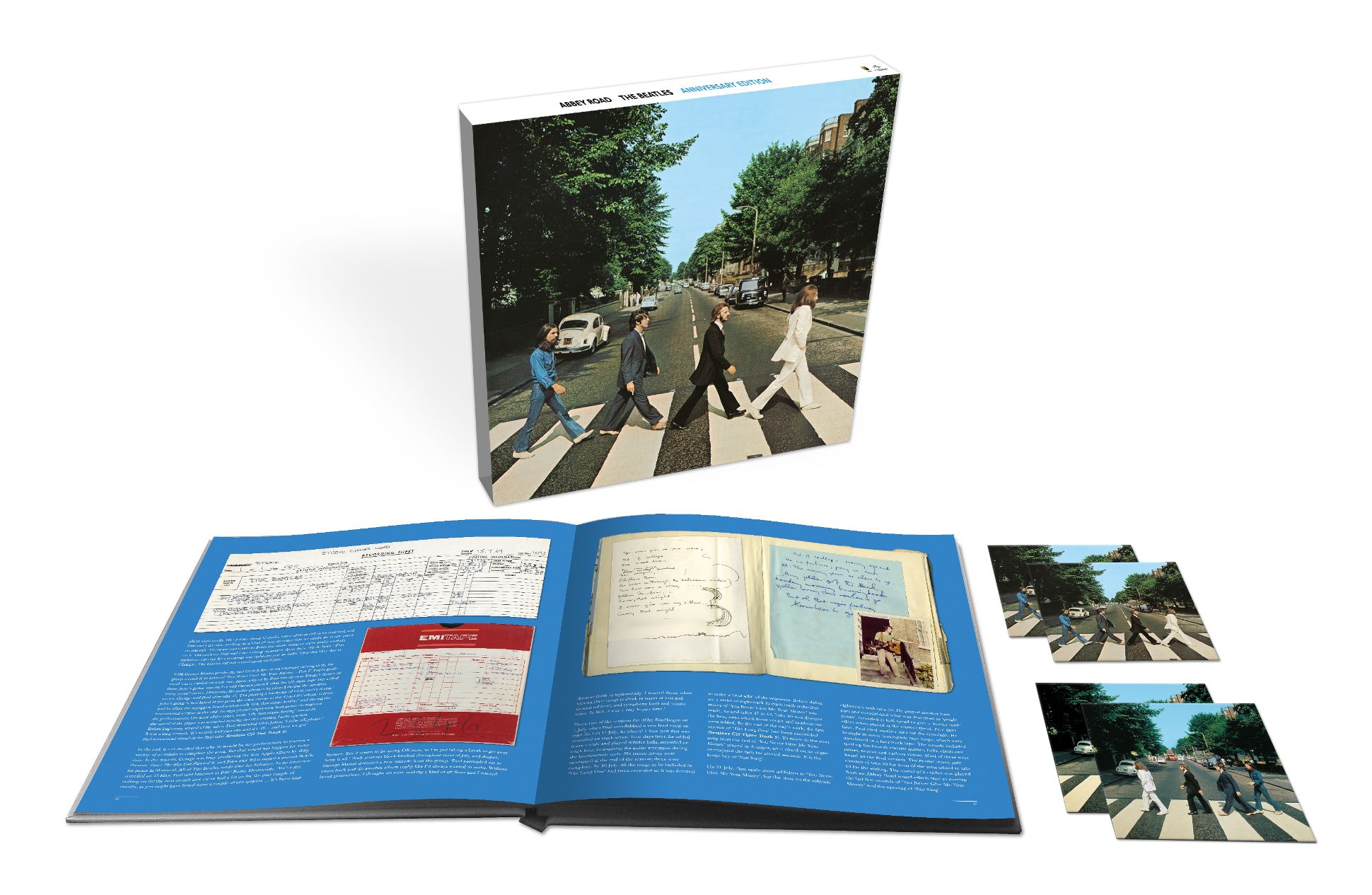 On September 27th, 2019, various other editions of "Abbey Road" were released in connection with its 50th Anniversary. The "Deluxe" 2CD edition contains the new Giles Martin mix of the entire album as well as the never-before-heard "take 27" of "She Came In Through The Bathroom Window" as recorded on July 25th, 1969. The "Triple Album" vinyl set and the "Super Deluxe" 3CD + Blu-ray edition contain these tracks as well, along with the July 30th, 1969 trial edit and mix of the entire "Abbey Road" medley, as described above, which contains "She Came In Through The Bathroom Window" as it was mixed at the time. On September 27th, 2019, various other editions of "Abbey Road" were released in connection with its 50th Anniversary. The "Deluxe" 2CD edition contains the new Giles Martin mix of the entire album as well as the never-before-heard "take 27" of "She Came In Through The Bathroom Window" as recorded on July 25th, 1969. The "Triple Album" vinyl set and the "Super Deluxe" 3CD + Blu-ray edition contain these tracks as well, along with the July 30th, 1969 trial edit and mix of the entire "Abbey Road" medley, as described above, which contains "She Came In Through The Bathroom Window" as it was mixed at the time.
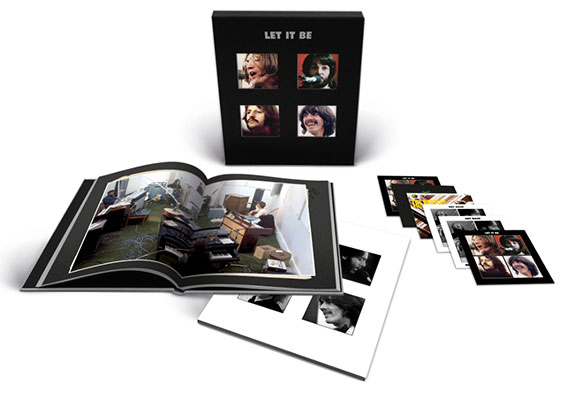 On October 15th, 2021, various editions of the "Let It Be" album were released, some of which featuring an interesting version of "She Came In Through The Bathroom Window." The "Super Deluxe" 5CD + Blu-ray edition and the "Super Deluxe" 4LP + 1 12" EP edition include an early rehearsal of the song with John on electric piano as recorded on January 21st, 1969 at their Apple Studio. On October 15th, 2021, various editions of the "Let It Be" album were released, some of which featuring an interesting version of "She Came In Through The Bathroom Window." The "Super Deluxe" 5CD + Blu-ray edition and the "Super Deluxe" 4LP + 1 12" EP edition include an early rehearsal of the song with John on electric piano as recorded on January 21st, 1969 at their Apple Studio.
Live Performances
Since they opted not to include the song in their live rooftop performance on January 30th, 1969, and the group never played live again, “She Came In Through The Bathroom Window” never saw a Beatles concert stage.
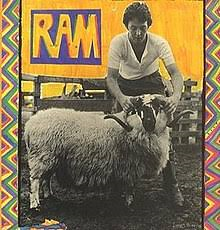 Paul McCartney, however, decided to include the song in his 2005 “The 'US' Tour,” which ran from September 16th (Miami, Florida) to November 30th (Los Angeles, California) of that year. The song was performed as a medley with his solo track “Too Many People,” which was originally from his classic 1971 album "Ram." Interestingly, Paul didn't think that the original "oh yeah" conclusion to "Bathroom Window" had a satisfying note of finality, so he thought that a reprise of the song's title from the beginning of the track was necessary. Paul McCartney, however, decided to include the song in his 2005 “The 'US' Tour,” which ran from September 16th (Miami, Florida) to November 30th (Los Angeles, California) of that year. The song was performed as a medley with his solo track “Too Many People,” which was originally from his classic 1971 album "Ram." Interestingly, Paul didn't think that the original "oh yeah" conclusion to "Bathroom Window" had a satisfying note of finality, so he thought that a reprise of the song's title from the beginning of the track was necessary.
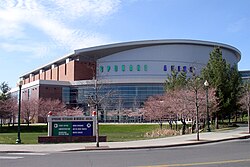 An interesting medley of "You Never Give Me Your Money" and "She Came In Through The Backroom Window" was included in Paul's "Got Back" tour, which ran from April 28th (at the Spokane Arena in Spokane, Washington) to December 3rd, 2023 (Belo Horizonte, Brazil). An interesting medley of "You Never Give Me Your Money" and "She Came In Through The Backroom Window" was included in Paul's "Got Back" tour, which ran from April 28th (at the Spokane Arena in Spokane, Washington) to December 3rd, 2023 (Belo Horizonte, Brazil).
Conclusion
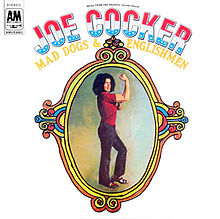 With a title like "She Came In Through The Bathroom Window" standing out on the track listing on the back of the album cover, the song was bound to attract attention. And attract it did. British singer Joe Cocker immediately recorded a cover version, his studio rendition becoming his first US Top 40 hit (peaking at #30 on the Billboard Hot 100) and a live performance recorded at the Fillmore East in New York in March of 1970 that appeared on his successful album "Mad Dogs & Englishmen." Other artists quickly followed suit, such as parody artist Ray Stevens who included his version on his successful album "Everything Is Beautiful," as well as covers by Ike and Tine Turner, The Youngbloods and The Bee Gees. With a title like "She Came In Through The Bathroom Window" standing out on the track listing on the back of the album cover, the song was bound to attract attention. And attract it did. British singer Joe Cocker immediately recorded a cover version, his studio rendition becoming his first US Top 40 hit (peaking at #30 on the Billboard Hot 100) and a live performance recorded at the Fillmore East in New York in March of 1970 that appeared on his successful album "Mad Dogs & Englishmen." Other artists quickly followed suit, such as parody artist Ray Stevens who included his version on his successful album "Everything Is Beautiful," as well as covers by Ike and Tine Turner, The Youngbloods and The Bee Gees.
The consensus was in that the song stood out nicely on the album and made a good impression on most. Even George Harrison agreed: “This is a very good song of Paul's, with good lyrics.”
Song Summary
“She Came In Through The Bathroom Window”
Written by: John Lennon / Paul McCartney
- Song Written: May 1968 to January 6, 1969
- Song Recorded: July 25, 28 & 30, 1969
- First US Release Date: October 1, 1969
- First US Album Release: Apple #SO-383 “Abbey Road”
- British Album Release: Apple #PCS 7088 “Abbey Road”
- US Single Release: n/a
- Highest Chart Position: n/a
- Length: 1:58
- Key: A major
- Producer: George Martin
- Engineers: Geoff Emerick, Phil McDonald, John Kurlander
Instrumentation (most likely):
- Paul McCartney - Lead and Backing Vocals, Bass (1964 Rickenbacker 4001 S ), Piano (1905 Steinway Vertegrand), Electric Piano (1968 Fender Rhodes Seventy-Three Sparkle Top), handclaps
- John Lennon - Rhythm Guitar (1964 Framus Hootenanny 5/024 Acoustic 12- string), backing vocals
- George Harrison - Lead Guitars (1957 Gibson Les Paul Standard, 1968 Fender Rosewood Telecaster), backing vocals
- Ringo Starr - Drums (1968 Ludwig Hollywood Maple), tambourine, maracas, cowbell
Written and compiled by Dave Rybaczewski
|
IF YOU WOULD LIKE TO MAKE A DONATION TO KEEP THIS WEBSITE UP AND RUNNING, PLEASE CLICK BELOW!
Sign Up Below for our MONTHLY BEATLES TRIVIA QUIZ!
|